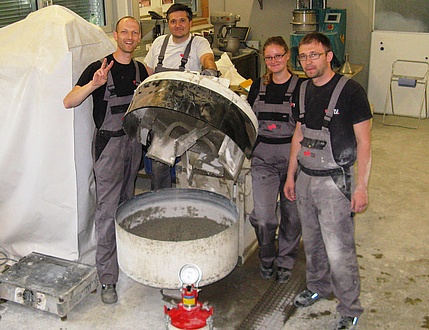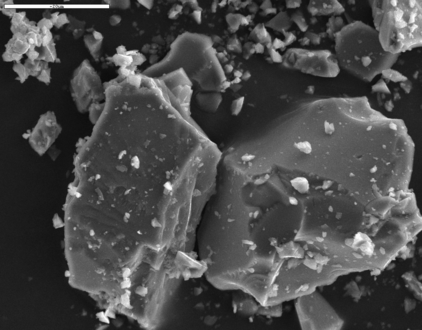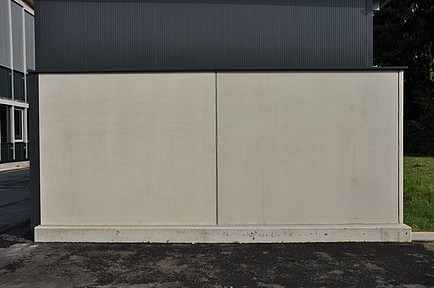Photographic material available for download at the end of the text.
Concrete is the most widely used construction material: No tunnel and hardly any building foundation can do without this extremely strong and durable construction material. But the questions about the environmental impact of our construction materials are becoming louder: “Why not turn a tried and tested construction material eco-friendly and make grey concrete “green” within?” Joachim Juhart from the Institute of Technology and Testing of Construction Materials at Graz University of Technology (TU Graz) asks. Together with partners from various disciplines his team have set themselves the goal of reducing the environmental impact of concrete “without launching a competition for the most eco-friendly construction materials. We are not so much interested in creating alternatives to concrete as in bringing about sustainable improvements for the material that we have on hand now”, Juhart explains.
Öko2-Beton for precast element industry
Juhart’s team is proud of the success of the Öko²-Beton project carried out in cooperation with the Precast Industry Association: Together they developed a concept for the optimum composition of concrete that fulfils all the requirements that concrete for precast components has to meet while ensuring significantly reduced environmental impact at the same time. This has been made possible thanks to the optimized mix of extremely fine-grained material and binding agents in the concrete. On the campus of TU Graz, the team built wall elements of 2.4 m x 3.0 m using Öko²-Beton concrete. The elements were produced in the standard production cycle of a concrete plant. Juhart’s team tested the concrete during production. The result: The workability of Öko²-Beton for precast elements is the same as that of standard concrete; early strength and curing time are also identical, while CO2 emissions during production are reduced by up to 30 %. Primary energy consumption is cut back by as much as 15 % of standard concrete with identical properties. And there is no difference between walls built from Öko²-Beton and standard concrete also as far as looks go either.
Different mixing ratio, finer microfillers
This is a remarkable result; even more so because the precast industry makes very stringent demands on its input material: It must be possible to strip the formwork and lift precast concrete parts after eight hours of setting. “This means that the more eco-friendly concrete must have the same strength as standard concrete and it must harden as fast as standard concrete”, Joachim Juhart explains. Concrete consists of rock particles of different grades, water and a binding agent that contains Portland cement among other things. Portland cement must be kilned with a great energy input at 1,450 degrees Celsius, which releases significant amounts of CO2. The cement therefore accounts for the major part of the ecological footprint of concrete. One alternative approach: replacing part of the Portland cement by other substances that are available in the region. The scientists from Graz made various adjustments and fine-tuned the mix. “We added very fine mineral powders as a microfiller and thus optimised the packing density of the mix. By this means we were able to add other fillers made from rock powder or even ground-granulated furnace slag. The major benefit: The fillers can be produced from various types of rock that are available in the region, so that CO2 emissions during the production process are cut back significantly”, Juhart explains.
Prototypes from seven regions
Seven Austrian plants that produce precast concrete elements are now producing prototypical construction elements from Öko²-Beton using rock flour and other substances that are available in their regions. “We want to demonstrate that the mixing ratio is the decisive aspect and that the necessary finest-grain material is actually on hand on site”, Juhart says. The researchers also want to demonstrate the durability of their eco-friendly concrete.
A more detailed article about the work of Joachim Juhart and his team can bei found here in Planet Research.
This research area ist attributed to the Field of Expertise "Advanced Materials Science“, one of TU Graz' five strategic areas of research.
![[Translate to Englisch:] © IMBT - TU Graz](https://www.tugraz.at/fileadmin/_processed_/2/e/csm_Oekobeton_2016_by_IBMT_tugraz_5c86838273.jpg)



